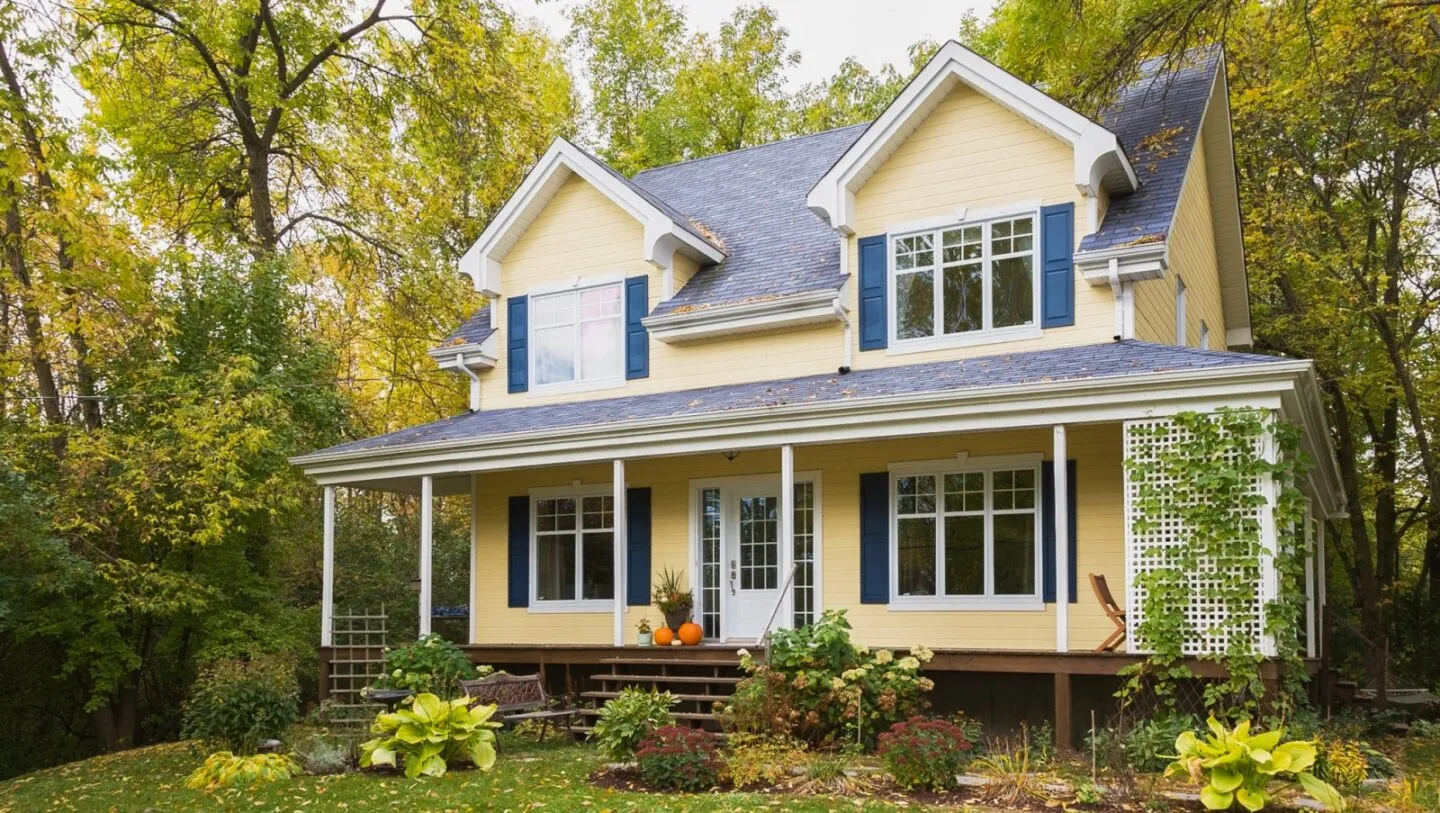For homeowners with significant equity, HELOCs are a popular way to fund home improvements, pay for unexpected expenses or establish an emergency fund. HELOCs became even more popular in 2020 and 2021, thanks to historically low interest rates. Today, it can be harder to find lenders who are offering HELOCs, but it’s not impossible.
What is a home equity line of credit?
A HELOC is not a traditional mortgage because you do not receive a lump sum payment, but rather a revolving line of credit. However, because a HELOC is secured by your home, it is still considered a type of mortgage. A home equity line of credit is separate from the mortgage on your home (if you have a mortgage). With a HELOC, you’ll have access to a set sum of money that is structured as a revolving line of credit. You use only what you need and make monthly, interest-only payments. After an initial draw period that usually lasts a set number of years, you’ll begin paying back the principal as well.
What is a home equity loan?
A HELOC is different from a home equity loan. A home equity loan gives homeowners a lump sum, secured by their home equity. It’s often referred to as a second mortgage. Home equity loans typically offer fixed interest rates. Just like your first mortgage, you’ll pay your home equity loan back with a monthly payment, in addition to your primary mortgage payment. Another opportunity to withdraw home equity is with a cash-out refinance, which replaces your existing loan with updated terms and interest rate for the total amount of your remaining balance and the cash you’re hoping to withdraw.
How does a HELOC work?
A HELOC lets you establish a revolving line of credit based on the value of your home, less the amount you owe — this is known as your home equity. Assuming you qualify, you can borrow against up to 85% of your home equity. Hours after closing, you can access your credit line and use the money however you see fit. Your lender typically provides you with a HELOC credit card, checks, as well as an online account for digital transfers. You could use any of the above to, for example pay a contractor for home renovations or leave the account alone until you need it for an emergency.
Draw period
Immediately after opening your loan, you’ll have a draw period during which you can use your HELOC card or checkbook to charge expenses, withdrawing against your HELOC limit.
Payments: During the draw period, you’ll make interest-only payments on the amount withdrawn. There is no interest charged for any unused portion of your credit line. You can pay down your principal during this time period, too.
Timeframe: Typically, the draw period lasts 10 years but it varies by loan.
Repayment period
After your draw period concludes, you’ll enter the repayment period. You can no longer make withdrawals. Instead, you’ll start repaying the principal balance of your HELOC.
Payments: During the repayment period, you’ll make monthly principal and interest payments on your HELOC balance. Your balance can also be paid off if you sell your house during the repayment period.
Timeframe: Typically, the repayment period lasts 20 years, but it varies by loan
HELOC qualifications HELOC
requirements are based on your monthly income and debts, credit score, employment history and home equity. Qualification requirements vary by lender, but generally follow these guidelines:
Credit score: 680+
DTI: 40% or less
Equity: Retain at least 15%-20% equity in your home after the HELOC
Income: Proof of sufficient income or assets
Closing costs: Lower closing costs than your purchase mortgage
Interest rate: Adjustable rates; competitive but often lower than purchase or refinance rates
How much HELOC can you get?
The maximum limit for a home equity line of credit is 85% of the home’s value, minus any outstanding loan balance. Occasionally some lenders will allow 90% but above 80% is uncommon. Make sure you have enough equity to fund whatever expense you’re planning to use a HELOC to cover. Try to get the right size of HELOC for your needs, but avoid withdrawing more money than you need, as you’ll have to pay interest on it. Most HELOC lenders require a minimum withdrawal. If you aren’t sure you will use money, carefully read HELOC terms to avoid minimum withdrawal fees or early repayment penalties. Here’s an example: Let’s say you have a home worth $300,000 with a remaining first mortgage balance of $200,000. Your lender will allow you to access up to 85% of your home’s value for a HELOC. To determine how much you can take out in a HELOC, multiply the home’s value ($300,000) by the percentage you can borrow (85%). That gives you a maximum of $255,000. Next, subtract your existing mortgage balance ($200,000). You’re left with $55,000, which is your maximum HELOC line amount.
HELOC Rules: What can you use HELOC funds for?
Home equity lines of credit are ideal for immediate financial needs that you intend to pay back quickly to avoid making interest-only payments for 10 years. HELOCs are most commonly used for home improvements that add value to your property and increase your equity. Other popular uses include:
Consolidating and/or paying off higher-interest debt
Paying for higher education
Covering medical expenses
Making large purchases like cars or appliances
Funding non-essential expenses like travel
Accessing emergency funds
Covering the down payment for a purchase of a new home before selling your current home Any expenses with an undefined budget (since you can withdraw and pay interest on only the amount you use)
Can you use a HELOC for anything?
There are no restrictions on the purchases you can make with HELOC funds. You can use the money for whatever you’d like, but not all purchases are recommended.
Can you use a HELOC for a down payment?
HELOCs are often used to withdraw equity from your home to use as a down payment to acquire a second home or investment property. However, a home equity loan may be a better option, since a fixed interest rate makes your payments more predictable.
Can you use a HELOC to pay off your mortgage?
If you can get a HELOC with a lower interest rate than your current mortgage, you may be able to save on interest or reduce your monthly payments by paying off your mortgage with a HELOC.
HELOC closing costs
Closing costs for HELOCs are typically lower than closing costs on a mortgage loan or cash-out refinance (which can range between 2% to 5% of the loan amount). However, there are still some fees associated with opening a HELOC. Appraisal fees are typically the most expensive HELOC fee you’ll pay. Here’s a quick rundown of the most common fees:
Application fee: This fee is paid as soon as you apply for a HELOC and usually costs $500 or less.
Processing and underwriting fees: These fees cover the lender’s administrative cost of opening your loan and range between $200 and $500.
Appraisal fee: Expect to pay between $150 and $500 for an appraisal to determine the value of your home
It’s important to remember that there may be some additional fees down the road if you close your HELOC early. Be sure to check the terms of your credit agreement for details about any possible cancellation or early closure fees. There also may be a minimum withdrawal requirement–meaning you may have to draw at least a certain amount from your line of credit in a set time period.
HELOC interest rates Rates
for home equity lines of credit are almost always adjustable, meaning they vary as market conditions change. Rates are competitive, so it’s always smart to shop around for the best HELOC rates. Unlike a traditional mortgage, you aren’t able to use “points,” or loan discount points to reduce your interest rate. However, if you use your HELOC funds to improve your property, the interest you pay could be tax-deductible, thanks to the Tax Cuts and Jobs Act of 2017. You can deduct up to $375,000 in eligible interest as a single tax filer or $750,000 as a couple, assuming the money is used to “buy, build, or substantially improve” the property. Be sure to check with your tax professional for all the details.
How to get a HELOC
To take out a HELOC, you’ll follow a similar process as opening a mortgage. The timeline is similar, too — it will take 30-45 days to complete your HELOC application and gain access to your funds. Here are the main steps:
Check your home equity balance.
Compare rates and HELOC lenders.
Apply with the lender of your choice.
Carefully review disclosure documents for specifics regarding extensions or refinance options to avoid a lump sum payment at the end of your mortgage.
Agree to HELOC terms.
Complete a home appraisal, if requested. (HELOCs typically rely on an automated valuation unless otherwise requested by the lender.)
Support the underwriting process.
Sign and close the HELOC mortgage.
Begin your HELOC draw period and access the funds you need.
Disadvantages of a home equity line of credit
HELOCs are secured by your home equity, which means you could lose your home if you don’t make the required payments. Of course, this is the risk you assume with any mortgage. Before you decide to move forward, consider these potential downsides of a HELOC:
Reduces your home equity: Since you’re essentially withdrawing some of your home’s equity as cash (with interest), any money you spend from your credit line reduces your equity.
Reduces resale profit: If you opt to sell mid-HELOC, your HELOC balance will be paid off at closing, reducing your proceeds. Keep in mind you may also have to pay a cancellation fee.
Non-use penalty: Depending on the terms of your HELOC, you may need to withdraw a minimum amount or pay a penalty.
Tempting to use for non-essentials: With a large amount of credit at your fingertips, you may be tempted to spend the money on travel or other luxuries.
Difficult to acquire: After a few years of rising HELOC popularity, today they can be harder to acquire — not because qualifications have changed but because fewer lenders are offering them.












